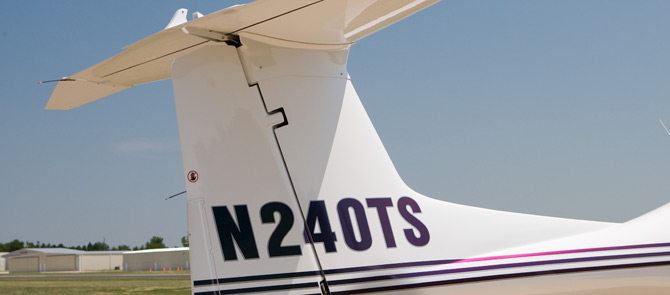Bill to restore BARR provisions introduced
The effort to restore privacy to general aviation flights that can be tracked on private Internet sites using FAA data continues to gain interest in Congress, with a new bill introduced by Rep. Mike Pompeo (R-Kan.).
AOPA and the National Business Aviation Association (NBAA) also are seeking court relief from the FAA’s decision to impose severe new restrictions on pilots’ use of the Block Aircraft Registration Request (BARR) program. Under the policy that took effect August 2, a “valid security concern” is required for a GA IFR flight to withhold its registration number and related flight information from public dissemination. See “Waypoints: Stop the Bashing, Start the Building.”
Pompeo’s legislation would require FAA Administrator Randy Babbitt to “prevent the dissemination to the public of certain information with respect to noncommercial flights of private aircraft owners and operators.” The bill would require the FAA, at a pilot’s request, to block the display of the aircraft’s N number “in situational display data available to the public.”
The bill would preserve access to the information for federal, state, and local government agencies.
“The FAA’s actions are part of the Obama administration’s continued assault on general aviation. As a result, a stand-alone piece of legislation is needed to roll back this regulatory overreach by the FAA,” Pompeo said. “The BARR Preservation Act would allow Americans to opt out of having their movements tracked by anyone other than law enforcement agencies. Preserving crucial privacy protection will ensure flight safety for many users in the general aviation community, which is a vital part of the South Central Kansas economy.”
AOPA and NBAA recently petitioned the U.S. Court of Appeals for the District of Columbia to invalidate the new limitations on BARR.
“We want the court to understand that this issue should alarm anyone who supports basic privacy protections, whether or not they ever get on an airplane,” said AOPA President Craig Fuller.
NATIONAL
Tell FAA to count sport pilot time toward higher certificates
The FAA has opened for public comments a petition submitted by AOPA and three other associations urging that flight instruction from sport pilot instructors logged by sport pilot applicants be eligible to be counted toward higher pilot certificates.
Members are encouraged to submit comments in support of the petition that, if granted, would give sport pilots greater incentive to pursue further flight training, and recognize the cumulative value of their aeronautical experience in the spirit of the final sport pilot rule enacted in 2004.
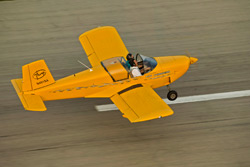 In January, AOPA, the Experimental Aircraft Association (EAA), the General Aviation Manufacturers Association (GAMA), and the National Association
In January, AOPA, the Experimental Aircraft Association (EAA), the General Aviation Manufacturers Association (GAMA), and the National Association
of Flight Instructors (NAFI) petitioned to amend FARs 61.99 and 61.109 to clearly “permit the instruction time received in pursuit of a sport pilot certificate to
be credited toward the instruction requirements of additional certificates and ratings.” Pilots wishing to earn recreational or private pilot certificates would still be required to receive training from a certificated flight instructor on all areas defined under the knowledge and flight proficiency requirements of that certificate.
The associations urged the amendments as a fix for the flaw pointed out by FAA legal staff that was preventing student sport pilots from counting their training flight hours received from sport pilot instructors toward higher certificates and thus discouraging them from pursuing additional training. A July 24, 2009, FAA letter of interpretation argued that allowing time logged with an instructor with a sport pilot rating to count toward a private pilot certificate would be “the functional equivalent of permitting that instructor to provide flight training for the issuance of the private pilot certificate.”
In response, the associations pointed out that when the FAA proposed the sport pilot rule in 2002 it signaled its intent to credit flight time earned during training with a sport pilot instructor toward the higher certificate.
The associations have been pressing the FAA to correct this situation since the letter was issued and petitioned for the rule change in January.
Members can submit comments online under Docket FAA-2011-0138.
FAA won’t ground your iPad
Users of iPads and other tablet computers in the cockpit can breathe a sigh of relief: A proposed advisory circular (AC) that could have limited general aviation operators’ use of those devices was not intended to do so, the FAA assured AOPA and the General Aviation Manufacturers Association.
The agency said it is making revisions to the AC, “Guidelines for the Certification, Airworthiness, and Operational Use of Electronic Flight Bags EFB,” to clarify that it is only applicable for Part 135 and 121 operators, not pilots operating under Part 91.
The two associations had voiced concern that applying the circular to “operational use” of all EFBs—not just those being used in situations that require “operational approval”—would significantly broaden its scope, and potentially require substantial testing for each aircraft/EFB for GA operations. The FAA said it would correct references to “operational use.”
“Electronic flight bag technology is a valuable tool in flight and will help enable many expected NextGen capabilities at an affordable cost,” said Kristine Hartzell, AOPA manager of regulatory affairs. “The FAA needs to keep this option available to GA.”
STATE AND LOCAL ACTION
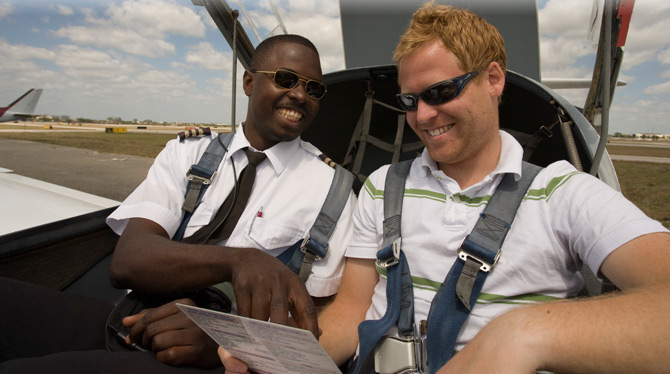
1 California: CFIs, students win training relief in California
California flight instruction providers—who waited more than a year for relief from crippling regulatory burdens imposed under a 2009 education-reform law—got the news they were waiting for, when Gov. Jerry Brown signed a bill exempting them from its provisions. "Since we learned a year and a half ago about AB 48 and its unintended devastating consequences on the California flight training industry, AOPA has been continuously working to convince the legislature that the health of aviation in the state is vitally important to the health of the whole state economy," said AOPA California Regional Representative John Pfeifer. "The passage of Senate Bill 619 provides the relief necessary to keep flight training alive in California. We are especially grateful to Sen. Jean Fuller and her staff for carrying this bill forward to completion," he said. The California Private Postsecondary Act of 2009 was intended to protect the financial well being of students who seek an education at a postsecondary school. The regulations posed unintended consequences for flight training providers by posing a financial burden that many would have been unable to bear. The law exempts from its provisions providers or programs that provide instruction pursuant to FAA regulations and meet both of the following criteria: The flight instruction provider or program does not require students to enter into written or oral contracts of indebtedness, and does not require prepayment of instruction-related costs in excess of $2,500.
2 California: Agreement reached to re-open the 'Chicken Strip'
The Recreational Aviation Foundation (RAF) and the National Park Service (NPS) in cooperation with Chief Ranger Brent Pennington reached an agreement under the existing Memorandum of Understanding to re-open the Chicken Strip. The Chicken Strip airstrip is located in Saline Valley, and is part of the Death Valley National Monument in California. The landing strip will be officially re-opened to pilots after some minor preparations conclude.
Did you know?
The Nebraska Legislature is both unicameral (one chamber) and non-partisan. It is also the smallest state legislature in the nation with 49 members, who are referred to as "senators" even though the body is not formally referred to as the "Senate."
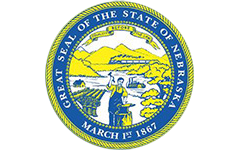
Legislative Lingo:
'Hostile amendment'
hos-tl uh- mend- muh' nt
1. An amendment that the bill's author does not want. Hostile amendments can be inserted into a bill, over the objections of the author, usually by a majority vote in committee or on the floor before a full body of a legislature.

Certificated flight instructors residing in the state of California.
"Studying options for the existing airport should have been done years ago rather than just abandoning the existing airport..."
3 Nevada: Pilot honored for local airport advocacy
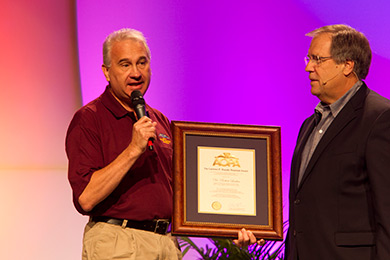 AOPA awarded its highest honor for individuals to Robert Larkin, a county commissioner in Washoe County, Nevada, and volunteer for AOPA's Airport Support Network at Reno/Tahoe International Airport. The Reno-Tahoe Airport Authority took action last year to reduce and limit GA access at the airport by failing to renew the leases of two FBOs and taking over rental of hangars there (see "Saving Airports: Keeping GA at Reno/Tahoe," September 2011 AOPA Pilot). Airport administration indicated they would operate the existing hangars for "at least one year or until new hangars were built at Reno-Stead Airport," which the authority also operates. Larkin, working closely with AOPA, assisted local pilots in organizing the Reno-Tahoe Aviation Association and tutored them on how to deal with the airport authority, and facilitated resolutions for continued support of GA facilities at Reno/Tahoe International by Washoe County and the city of Sparks, Nevada. "Commissioner Larkin's leadership and advocacy efforts are a perfect example of what can be accomplished when pilots are engaged and committed to making a difference," said AOPA President Craig Fuller. "It can be hard work, but as we saw in Reno, well worth the effort."
AOPA awarded its highest honor for individuals to Robert Larkin, a county commissioner in Washoe County, Nevada, and volunteer for AOPA's Airport Support Network at Reno/Tahoe International Airport. The Reno-Tahoe Airport Authority took action last year to reduce and limit GA access at the airport by failing to renew the leases of two FBOs and taking over rental of hangars there (see "Saving Airports: Keeping GA at Reno/Tahoe," September 2011 AOPA Pilot). Airport administration indicated they would operate the existing hangars for "at least one year or until new hangars were built at Reno-Stead Airport," which the authority also operates. Larkin, working closely with AOPA, assisted local pilots in organizing the Reno-Tahoe Aviation Association and tutored them on how to deal with the airport authority, and facilitated resolutions for continued support of GA facilities at Reno/Tahoe International by Washoe County and the city of Sparks, Nevada. "Commissioner Larkin's leadership and advocacy efforts are a perfect example of what can be accomplished when pilots are engaged and committed to making a difference," said AOPA President Craig Fuller. "It can be hard work, but as we saw in Reno, well worth the effort."
4 Idaho: Solutions at home could save taxpayers money
Faced with steepening odds of moving Friedman Memorial Airport 15 miles away from its current location, Hailey, Idaho, city and airport officials are reconsidering plans to do what local pilots had recommended all along—invest in the airport they have. The airport authority has for six years been looking to relocate the airport because the existing field does not meet FAA design standards for operating Class 3 aircraft such as Bombardier Q400 turboprops used there by Horizon Air. The move could cost a total of more than $300 million, and AOPA and local pilots have urged members of the authority to focus on much cheaper solutions that would keep the airport in its current location. "Studying options for the existing airport should have been done years ago rather than just abandoning the existing airport in favor of a new one much farther away from population and tourist centers," said AOPA Vice President of Airport Advocacy Bill Dunn, who met with members of the airport community in Hailey. One plan to work with the existing airport would shift the runway to the south by 1,800 feet, and the other would shift the runway south by roughly a mile and change the orientation slightly. Both options would be far cheaper than building a new airport.
AIRPORT SUPPORT NETWORK
ASN at Summit
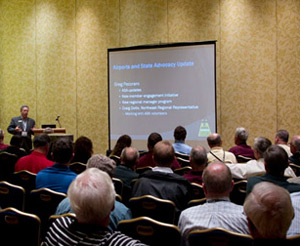 When an issue of concern to general aviation arises, it's not unusual for a pilot community to find out that their local AOPA Airport Network (ASN) volunteer is already on the case.
When an issue of concern to general aviation arises, it's not unusual for a pilot community to find out that their local AOPA Airport Network (ASN) volunteer is already on the case.
Keeping that critical network informed and inspired was on the agenda at AOPA Aviation Summit when volunteers had a chance to mingle with colleagues and meet with AOPA President Craig Fuller.
The ASN program continues to grow and now includes 2,400 volunteers. With more than 100 in attendance for the meeting, volunteers learned about how AOPA is exploring ways to create opportunities for members to develop and join aviation communities centered around their airports to better support general aviation.
Key advocacy staff has worked closely in the field with many ASN volunteers at airports across the country. Staff briefed the attendees on current airport advocacy issues and gave an overview of the many advocacy resources and tools available to all volunteers and AOPA members online.
AOPA MEMBERSHIP PRODUCTS
Year-end 2011 tax planning
In December 2010, President Barack Obama signed The Tax Relief, Unemployment Insurance Reauthorization, and Job Creation Act of 2010, which included provisions that may be advantageous for aircraft purchasers who use their aircraft at least 50 percent for business.
The bill includes a modified extension of the bonus depreciation program and the IRS Section 179 expensing option. First-year depreciation for brand-new aircraft, and/or new equipment in existing aircraft, is 100 percent for aircraft placed in service from September 9, 2010, through December 31, 2011. On January 1, 2012, the depreciation drops to 50 percent. Also, some larger aircraft may be able to carry benefits into a 2013 placement.
The IRS Section 179 expensing can be used for either new or used business aircraft and aircraft equipment—100 percent of the first $500,000 of the cost up to $2 million in 2011, and 100 percent of the first $125,000 of the cost up to $500,000 in 2012.
Flight training continues to be deductible if it is required by your current job or employer, or when it enhances current employment short of qualifying you for a new job.
It's a great time to buy with interest rates near 40-year lows. See the website for aircraft financing information. If you are looking for a partner to share the cost, check out AOPA's Aircraft Partnership Program. And, for those owners renting their aircraft to two or three named pilots, the AOPA Insurance Agency offers great insurance rates.
If you hate shopping malls, you'll love the AOPA Store
 AOPA makes buying holiday gifts for your pilot family and friends easy—and you don't have to battle the mall crowds. The AOPA Store lets you shop for all kinds of AOPA merchandise right from your computer. All items in the AOPA Store were selected and tested by pilots for pilots.
AOPA makes buying holiday gifts for your pilot family and friends easy—and you don't have to battle the mall crowds. The AOPA Store lets you shop for all kinds of AOPA merchandise right from your computer. All items in the AOPA Store were selected and tested by pilots for pilots.
While you're shopping, pick up something for yourself as well: AOPA's 2011 holiday ornament, a 1940 Waco, for example. Wallets, ramp pass holders, watches, doormats, and dozens of other items will enhance your aviation lifestyle.
Proceeds from every sale benefit the work of AOPA. Your purchase could save an airport, attract a new pilot, or help pass legislation. To date, store proceeds have contributed $500,000 to AOPA's efforts to keep GA flying safe and affordable.
Air Safety Institute
Witness a chilling Cross-Country Crisis accident case study
FREE AOPA ASF | |
|---|---|
| 11/01/2011 | Greenville, SC |
| 11/01/2011 | Pensacola, FL |
| 11/01/2011 | Salt Lake City, UT |
| 11/02/2011 | Boise, ID |
| 11/02/2011 | Birmingham, AL |
| 11/02/2011 | Atlanta, GA |
| 11/03/2011 | Huntsville, AL |
| 11/03/2011 | Marietta, GA |
| 11/03/2011 | Pocatello, ID |
| 11/05/2011 | Pikeville, NC |
| 11/07/2011 | Greensboro, NC |
| 11/07/2011 | Ypsilanti, MI |
| 11/08/2011 | Cleveland, OH |
| 11/08/2011 | Charlotte, NC |
| 11/09/2011 | Asheville, NC |
| 11/09/2011 | Columbus, OH |
| 11/10/2011 | Indianapolis, IN |
| 11/14/2011 | Costa Mesa, CA |
| 11/15/2011 | Ontario, CA |
| 11/16/2011 | San Diego, CA |
| These programs are made possible by gifts from individual pilot donors to the AOPA Air Safety Foundation. Seminar dates are tentative. For final dates, please visit the Web site. | |
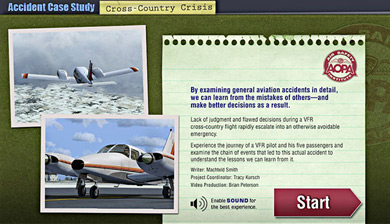 Ride along with the pilot and his five passengers on an ill-fated flight in a Piper Seneca II as the weather deteriorates en route. You will get a gripping look at the peril in store as the pilot struggles to maintain control of the aircraft in a half-mile visibility and heavy snow in mountainous terrain near Huntington, West Virginia. To make matters worse, the aircraft is low on fuel, leaving ATC and the pilot few options.
Ride along with the pilot and his five passengers on an ill-fated flight in a Piper Seneca II as the weather deteriorates en route. You will get a gripping look at the peril in store as the pilot struggles to maintain control of the aircraft in a half-mile visibility and heavy snow in mountainous terrain near Huntington, West Virginia. To make matters worse, the aircraft is low on fuel, leaving ATC and the pilot few options.
Using actual ATC audio and dramatic Microsoft Flight Simulator re-creations, Cross-Country Crisis is interspersed with scene analysis and safety tips to decipher where things went from bad to worse. You'll come away with a clear understanding of how faulty decision making can paint a pilot into a corner from where there is not much hope of a safe return. This ASI accident case study highlights the critical and lifesaving role a 180-degree turn can play when pilots encounter deteriorating weather. See the course.
Aircraft flash cards at your demand
Professional pilots often use aircraft-specific flash cards to review systems and procedures anytime, anywhere. Well, if it's good enough for the pros, then why not you? Even if you own your aircraft, have memorized all checklists, and can find every switch in the dark, you could benefit from these free flash cards, which you can download and customize before your next flight.
ASI's Aircraft Flash Cards provide a clever way to quickly review items found in the pilot's operating handbook and aircraft information manual. For example, could you identify each antenna and its function? Think about it: Using these cards will have you well-prepared when it comes time for your proficiency check. It'll be your chance to effortlessly recite emergency procedures; boldly speak of your aircraft's V-speeds; and casually discuss the electrical system specifications. Of course, you first have to glean and copy that information from the POH onto the cards. But once done, this useful information is at your fingertips at home and work, in the hangar, and in the cockpit.
So what are you waiting for? Download your copy to personalize. All that's left is to study the cards and test your knowledge.
Stay out of trouble with these safety spotlights
Aeronautical Decision Making
- Poor decision making is the root cause of many—if not most—aviation accidents. Good decision making, on the other hand, is about avoiding the circumstances that lead to really tough choices. The goal is really very simple: Learn to make good choices every time you fly. Check out these relevant safety courses and quizzes to help you hone this single most important safety skill.
VFR Into IMC
- In most years, nearly half of all weather-related accidents happen as a result of continued VFR flight into instrument meteorological conditions (IMC)…and sadly, the vast majority of those accidents are fatal. Don't be the next pilot to fall prey to descending ceilings and deteriorating visibility: Check out these free resources.
AOPA aircraft partnership program: Gateway to ownership
A seller’s market in aircraft partnerships
By Dave Hirschman
At a time of falling aircraft values and a glut of both new and used airplanes for sale, there's one hidden seller's market: aircraft partnerships.
The AOPA Aircraft Partnership Program has attracted about 14,000 prospective buyers and sellers during its first six months, and so far, there are far more buyers than sellers. In fact, more than 90 percent of the pilots who have signed up for the program are looking to buy a share of an existing aircraft, and fewer than 10 percent are looking to sell one.
“There’s not enough supply of aircraft shares for sale so far to meet the demand,” said David Kruger, a Texas pilot who founded the Aircraft Partnership Association in 2008 and recently aligned it with the rapidly growing AOPA program. “Right now the ratio of buyers to sellers is about 18 to one. It’s very much a seller’s market.”
AOPA helps bring buyers and sellers together online and shares detailed (but confidential) profiles that include location, desired aircraft, budgets, and more. In the future, AOPA will provide complete packages for aircraft partners that include a full range of services.
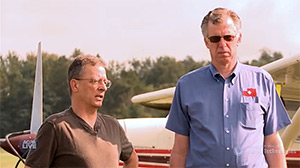 Patrick Merkel, 55, a lawyer in Washington, D.C., owns a 1961 Cessna 172 that has been in his family for six years. Two of his four children have used the airplane for flight training, including a son who made his initial solo flight in it. The airplane is IFR equipped with a STOL kit, but it had one big limitation: its location.
Patrick Merkel, 55, a lawyer in Washington, D.C., owns a 1961 Cessna 172 that has been in his family for six years. Two of his four children have used the airplane for flight training, including a son who made his initial solo flight in it. The airplane is IFR equipped with a STOL kit, but it had one big limitation: its location.
Merkel’s 172 is based at historic College Park Airport, one of the “D.C. three” GA facilities inside both Washington’s Special Flight Rules Area (SFRA) and the Flight Restricted Zone (FRZ). To fly there, pilots have to undergo FAA and TSA screenings and obtain discrete transponder codes before every flight.
Merkel is determined to support the facility. It turned out to be ideal for Bob Thompson, 60, a high school teacher in the Prince George’s County school system who lives within easy biking distance.
For Thompson, a new private pilot with 80 total flight hours, flying in the FRZ isn’t a drawback. He is comfortable with the procedures, and he intends to seek an instrument rating, so talking with controllers on every flight is good preparation.
Thompson filled out a detailed online questionnaire that not only spelled out his ratings and flight experience, but also his intentions for how he hoped to use a partnership airplane.
“I teach high school so evening flying between late August and mid-June would be two or three evenings a month, mostly for proficiency and sightseeing. An occasional day trip on the weekends is possible,” he wrote. “During school holidays, I would like to sometimes fly to North Carolina to visit in-laws.”
Merkel was clear in his description of the airplane, too, saying it was a “great putt-putt airplane” that was “IFR capable but has no autopilot. Loves grass strips and $100 crab cakes.”
The total value of the airplane is about $25,000.Insurance costs are about $850 a year, and the tiedown at College Park is $70 a month.
The two exchanged email, and once they met in person, it didn’t take long to close the deal. Thompson had already set aside money to buy an airplane, and he was comfortable with his new partner.
They use an online flight scheduler to arrange flying time and sometimes back it up with a phone call or voice message. During their first summer of sharing an aircraft, they’ve had no scheduling conflicts. (Merkel, an instrument-rated pilot with about 900 flight hours, also owns a share in a Mooney.)
“A partnership just makes sense because airplanes tend to sit too much when they’re individually owned,” he said. “The airplane does better mechanically when it flies regularly, and having a partner makes it affordable.”
Thompson says the only thing that’s surprised him about his first summer of co-ownership is that he hasn’t been flying more.
“I intend to fly more than I have been flying,” he said, citing adverse weather and a busy travel schedule. “But I intend to fix that.”
Email the author at [email protected].
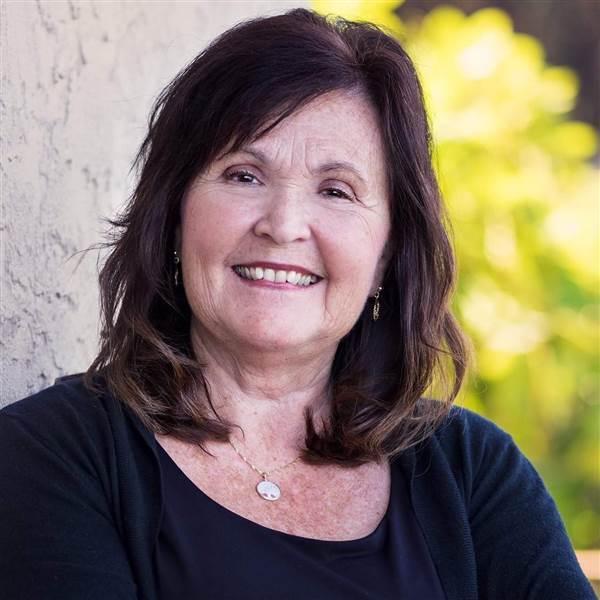
Related Articles
Bill to restore BARR provisions introduced
The effort to restore privacy to general aviation flights that can be tracked on private Internet sites using FAA data continues to gain interest in Congress, with a new bill introduced by Rep. Mike Pompeo (R-Kan.).
AOPA and the National Business Aviation Association (NBAA) also are seeking court relief from the FAA’s decision to impose severe new restrictions on pilots’ use of the Block Aircraft Registration Request (BARR) program. Under the policy that took effect August 2, a “valid security concern” is required for a GA IFR flight to withhold its registration number and related flight information from public dissemination. See “Waypoints: Stop the Bashing, Start the Building.”
Pompeo’s legislation would require FAA Administrator Randy Babbitt to “prevent the dissemination to the public of certain information with respect to noncommercial flights of private aircraft owners and operators.” The bill would require the FAA, at a pilot’s request, to block the display of the aircraft’s N number “in situational display data available to the public.”
The bill would preserve access to the information for federal, state, and local government agencies.
“The FAA’s actions are part of the Obama administration’s continued assault on general aviation. As a result, a stand-alone piece of legislation is needed to roll back this regulatory overreach by the FAA,” Pompeo said. “The BARR Preservation Act would allow Americans to opt out of having their movements tracked by anyone other than law enforcement agencies. Preserving crucial privacy protection will ensure flight safety for many users in the general aviation community, which is a vital part of the South Central Kansas economy.”
AOPA and NBAA recently petitioned the U.S. Court of Appeals for the District of Columbia to invalidate the new limitations on BARR.
“We want the court to understand that this issue should alarm anyone who supports basic privacy protections, whether or not they ever get on an airplane,” said AOPA President Craig Fuller.
NATIONAL
Tell FAA to count sport pilot time toward higher certificates
The FAA has opened for public comments a petition submitted by AOPA and three other associations urging that flight instruction from sport pilot instructors logged by sport pilot applicants be eligible to be counted toward higher pilot certificates.
Members are encouraged to submit comments in support of the petition that, if granted, would give sport pilots greater incentive to pursue further flight training, and recognize the cumulative value of their aeronautical experience in the spirit of the final sport pilot rule enacted in 2004.
 In January, AOPA, the Experimental Aircraft Association (EAA), the General Aviation Manufacturers Association (GAMA), and the National Association
In January, AOPA, the Experimental Aircraft Association (EAA), the General Aviation Manufacturers Association (GAMA), and the National Association
of Flight Instructors (NAFI) petitioned to amend FARs 61.99 and 61.109 to clearly “permit the instruction time received in pursuit of a sport pilot certificate to
be credited toward the instruction requirements of additional certificates and ratings.” Pilots wishing to earn recreational or private pilot certificates would still be required to receive training from a certificated flight instructor on all areas defined under the knowledge and flight proficiency requirements of that certificate.
The associations urged the amendments as a fix for the flaw pointed out by FAA legal staff that was preventing student sport pilots from counting their training flight hours received from sport pilot instructors toward higher certificates and thus discouraging them from pursuing additional training. A July 24, 2009, FAA letter of interpretation argued that allowing time logged with an instructor with a sport pilot rating to count toward a private pilot certificate would be “the functional equivalent of permitting that instructor to provide flight training for the issuance of the private pilot certificate.”
In response, the associations pointed out that when the FAA proposed the sport pilot rule in 2002 it signaled its intent to credit flight time earned during training with a sport pilot instructor toward the higher certificate.
The associations have been pressing the FAA to correct this situation since the letter was issued and petitioned for the rule change in January.
Members can submit comments online under Docket FAA-2011-0138.
FAA won’t ground your iPad
Users of iPads and other tablet computers in the cockpit can breathe a sigh of relief: A proposed advisory circular (AC) that could have limited general aviation operators’ use of those devices was not intended to do so, the FAA assured AOPA and the General Aviation Manufacturers Association.
The agency said it is making revisions to the AC, “Guidelines for the Certification, Airworthiness, and Operational Use of Electronic Flight Bags EFB,” to clarify that it is only applicable for Part 135 and 121 operators, not pilots operating under Part 91.
The two associations had voiced concern that applying the circular to “operational use” of all EFBs—not just those being used in situations that require “operational approval”—would significantly broaden its scope, and potentially require substantial testing for each aircraft/EFB for GA operations. The FAA said it would correct references to “operational use.”
“Electronic flight bag technology is a valuable tool in flight and will help enable many expected NextGen capabilities at an affordable cost,” said Kristine Hartzell, AOPA manager of regulatory affairs. “The FAA needs to keep this option available to GA.”
STATE AND LOCAL ACTION

1 California: CFIs, students win training relief in California
California flight instruction providers—who waited more than a year for relief from crippling regulatory burdens imposed under a 2009 education-reform law—got the news they were waiting for, when Gov. Jerry Brown signed a bill exempting them from its provisions. "Since we learned a year and a half ago about AB 48 and its unintended devastating consequences on the California flight training industry, AOPA has been continuously working to convince the legislature that the health of aviation in the state is vitally important to the health of the whole state economy," said AOPA California Regional Representative John Pfeifer. "The passage of Senate Bill 619 provides the relief necessary to keep flight training alive in California. We are especially grateful to Sen. Jean Fuller and her staff for carrying this bill forward to completion," he said. The California Private Postsecondary Act of 2009 was intended to protect the financial well being of students who seek an education at a postsecondary school. The regulations posed unintended consequences for flight training providers by posing a financial burden that many would have been unable to bear. The law exempts from its provisions providers or programs that provide instruction pursuant to FAA regulations and meet both of the following criteria: The flight instruction provider or program does not require students to enter into written or oral contracts of indebtedness, and does not require prepayment of instruction-related costs in excess of $2,500.
2 California: Agreement reached to re-open the 'Chicken Strip'
The Recreational Aviation Foundation (RAF) and the National Park Service (NPS) in cooperation with Chief Ranger Brent Pennington reached an agreement under the existing Memorandum of Understanding to re-open the Chicken Strip. The Chicken Strip airstrip is located in Saline Valley, and is part of the Death Valley National Monument in California. The landing strip will be officially re-opened to pilots after some minor preparations conclude.
Did you know?
The Nebraska Legislature is both unicameral (one chamber) and non-partisan. It is also the smallest state legislature in the nation with 49 members, who are referred to as "senators" even though the body is not formally referred to as the "Senate."

Legislative Lingo:
'Hostile amendment'
hos-tl uh- mend- muh' nt
1. An amendment that the bill's author does not want. Hostile amendments can be inserted into a bill, over the objections of the author, usually by a majority vote in committee or on the floor before a full body of a legislature.

Certificated flight instructors residing in the state of California.
"Studying options for the existing airport should have been done years ago rather than just abandoning the existing airport..."
3 Nevada: Pilot honored for local airport advocacy
 AOPA awarded its highest honor for individuals to Robert Larkin, a county commissioner in Washoe County, Nevada, and volunteer for AOPA's Airport Support Network at Reno/Tahoe International Airport. The Reno-Tahoe Airport Authority took action last year to reduce and limit GA access at the airport by failing to renew the leases of two FBOs and taking over rental of hangars there (see "Saving Airports: Keeping GA at Reno/Tahoe," September 2011 AOPA Pilot). Airport administration indicated they would operate the existing hangars for "at least one year or until new hangars were built at Reno-Stead Airport," which the authority also operates. Larkin, working closely with AOPA, assisted local pilots in organizing the Reno-Tahoe Aviation Association and tutored them on how to deal with the airport authority, and facilitated resolutions for continued support of GA facilities at Reno/Tahoe International by Washoe County and the city of Sparks, Nevada. "Commissioner Larkin's leadership and advocacy efforts are a perfect example of what can be accomplished when pilots are engaged and committed to making a difference," said AOPA President Craig Fuller. "It can be hard work, but as we saw in Reno, well worth the effort."
AOPA awarded its highest honor for individuals to Robert Larkin, a county commissioner in Washoe County, Nevada, and volunteer for AOPA's Airport Support Network at Reno/Tahoe International Airport. The Reno-Tahoe Airport Authority took action last year to reduce and limit GA access at the airport by failing to renew the leases of two FBOs and taking over rental of hangars there (see "Saving Airports: Keeping GA at Reno/Tahoe," September 2011 AOPA Pilot). Airport administration indicated they would operate the existing hangars for "at least one year or until new hangars were built at Reno-Stead Airport," which the authority also operates. Larkin, working closely with AOPA, assisted local pilots in organizing the Reno-Tahoe Aviation Association and tutored them on how to deal with the airport authority, and facilitated resolutions for continued support of GA facilities at Reno/Tahoe International by Washoe County and the city of Sparks, Nevada. "Commissioner Larkin's leadership and advocacy efforts are a perfect example of what can be accomplished when pilots are engaged and committed to making a difference," said AOPA President Craig Fuller. "It can be hard work, but as we saw in Reno, well worth the effort."
4 Idaho: Solutions at home could save taxpayers money
Faced with steepening odds of moving Friedman Memorial Airport 15 miles away from its current location, Hailey, Idaho, city and airport officials are reconsidering plans to do what local pilots had recommended all along—invest in the airport they have. The airport authority has for six years been looking to relocate the airport because the existing field does not meet FAA design standards for operating Class 3 aircraft such as Bombardier Q400 turboprops used there by Horizon Air. The move could cost a total of more than $300 million, and AOPA and local pilots have urged members of the authority to focus on much cheaper solutions that would keep the airport in its current location. "Studying options for the existing airport should have been done years ago rather than just abandoning the existing airport in favor of a new one much farther away from population and tourist centers," said AOPA Vice President of Airport Advocacy Bill Dunn, who met with members of the airport community in Hailey. One plan to work with the existing airport would shift the runway to the south by 1,800 feet, and the other would shift the runway south by roughly a mile and change the orientation slightly. Both options would be far cheaper than building a new airport.
AIRPORT SUPPORT NETWORK
ASN at Summit
 When an issue of concern to general aviation arises, it's not unusual for a pilot community to find out that their local AOPA Airport Network (ASN) volunteer is already on the case.
When an issue of concern to general aviation arises, it's not unusual for a pilot community to find out that their local AOPA Airport Network (ASN) volunteer is already on the case.
Keeping that critical network informed and inspired was on the agenda at AOPA Aviation Summit when volunteers had a chance to mingle with colleagues and meet with AOPA President Craig Fuller.
The ASN program continues to grow and now includes 2,400 volunteers. With more than 100 in attendance for the meeting, volunteers learned about how AOPA is exploring ways to create opportunities for members to develop and join aviation communities centered around their airports to better support general aviation.
Key advocacy staff has worked closely in the field with many ASN volunteers at airports across the country. Staff briefed the attendees on current airport advocacy issues and gave an overview of the many advocacy resources and tools available to all volunteers and AOPA members online.
AOPA MEMBERSHIP PRODUCTS
Year-end 2011 tax planning
In December 2010, President Barack Obama signed The Tax Relief, Unemployment Insurance Reauthorization, and Job Creation Act of 2010, which included provisions that may be advantageous for aircraft purchasers who use their aircraft at least 50 percent for business.
The bill includes a modified extension of the bonus depreciation program and the IRS Section 179 expensing option. First-year depreciation for brand-new aircraft, and/or new equipment in existing aircraft, is 100 percent for aircraft placed in service from September 9, 2010, through December 31, 2011. On January 1, 2012, the depreciation drops to 50 percent. Also, some larger aircraft may be able to carry benefits into a 2013 placement.
The IRS Section 179 expensing can be used for either new or used business aircraft and aircraft equipment—100 percent of the first $500,000 of the cost up to $2 million in 2011, and 100 percent of the first $125,000 of the cost up to $500,000 in 2012.
Flight training continues to be deductible if it is required by your current job or employer, or when it enhances current employment short of qualifying you for a new job.
It's a great time to buy with interest rates near 40-year lows. See the website for aircraft financing information. If you are looking for a partner to share the cost, check out AOPA's Aircraft Partnership Program. And, for those owners renting their aircraft to two or three named pilots, the AOPA Insurance Agency offers great insurance rates.
If you hate shopping malls, you'll love the AOPA Store
 AOPA makes buying holiday gifts for your pilot family and friends easy—and you don't have to battle the mall crowds. The AOPA Store lets you shop for all kinds of AOPA merchandise right from your computer. All items in the AOPA Store were selected and tested by pilots for pilots.
AOPA makes buying holiday gifts for your pilot family and friends easy—and you don't have to battle the mall crowds. The AOPA Store lets you shop for all kinds of AOPA merchandise right from your computer. All items in the AOPA Store were selected and tested by pilots for pilots.
While you're shopping, pick up something for yourself as well: AOPA's 2011 holiday ornament, a 1940 Waco, for example. Wallets, ramp pass holders, watches, doormats, and dozens of other items will enhance your aviation lifestyle.
Proceeds from every sale benefit the work of AOPA. Your purchase could save an airport, attract a new pilot, or help pass legislation. To date, store proceeds have contributed $500,000 to AOPA's efforts to keep GA flying safe and affordable.
Air Safety Institute
Witness a chilling Cross-Country Crisis accident case study
FREE AOPA ASF | |
|---|---|
| 11/01/2011 | Greenville, SC |
| 11/01/2011 | Pensacola, FL |
| 11/01/2011 | Salt Lake City, UT |
| 11/02/2011 | Boise, ID |
| 11/02/2011 | Birmingham, AL |
| 11/02/2011 | Atlanta, GA |
| 11/03/2011 | Huntsville, AL |
| 11/03/2011 | Marietta, GA |
| 11/03/2011 | Pocatello, ID |
| 11/05/2011 | Pikeville, NC |
| 11/07/2011 | Greensboro, NC |
| 11/07/2011 | Ypsilanti, MI |
| 11/08/2011 | Cleveland, OH |
| 11/08/2011 | Charlotte, NC |
| 11/09/2011 | Asheville, NC |
| 11/09/2011 | Columbus, OH |
| 11/10/2011 | Indianapolis, IN |
| 11/14/2011 | Costa Mesa, CA |
| 11/15/2011 | Ontario, CA |
| 11/16/2011 | San Diego, CA |
| These programs are made possible by gifts from individual pilot donors to the AOPA Air Safety Foundation. Seminar dates are tentative. For final dates, please visit the Web site. | |
 Ride along with the pilot and his five passengers on an ill-fated flight in a Piper Seneca II as the weather deteriorates en route. You will get a gripping look at the peril in store as the pilot struggles to maintain control of the aircraft in a half-mile visibility and heavy snow in mountainous terrain near Huntington, West Virginia. To make matters worse, the aircraft is low on fuel, leaving ATC and the pilot few options.
Ride along with the pilot and his five passengers on an ill-fated flight in a Piper Seneca II as the weather deteriorates en route. You will get a gripping look at the peril in store as the pilot struggles to maintain control of the aircraft in a half-mile visibility and heavy snow in mountainous terrain near Huntington, West Virginia. To make matters worse, the aircraft is low on fuel, leaving ATC and the pilot few options.
Using actual ATC audio and dramatic Microsoft Flight Simulator re-creations, Cross-Country Crisis is interspersed with scene analysis and safety tips to decipher where things went from bad to worse. You'll come away with a clear understanding of how faulty decision making can paint a pilot into a corner from where there is not much hope of a safe return. This ASI accident case study highlights the critical and lifesaving role a 180-degree turn can play when pilots encounter deteriorating weather. See the course.
Aircraft flash cards at your demand
Professional pilots often use aircraft-specific flash cards to review systems and procedures anytime, anywhere. Well, if it's good enough for the pros, then why not you? Even if you own your aircraft, have memorized all checklists, and can find every switch in the dark, you could benefit from these free flash cards, which you can download and customize before your next flight.
ASI's Aircraft Flash Cards provide a clever way to quickly review items found in the pilot's operating handbook and aircraft information manual. For example, could you identify each antenna and its function? Think about it: Using these cards will have you well-prepared when it comes time for your proficiency check. It'll be your chance to effortlessly recite emergency procedures; boldly speak of your aircraft's V-speeds; and casually discuss the electrical system specifications. Of course, you first have to glean and copy that information from the POH onto the cards. But once done, this useful information is at your fingertips at home and work, in the hangar, and in the cockpit.
So what are you waiting for? Download your copy to personalize. All that's left is to study the cards and test your knowledge.
Stay out of trouble with these safety spotlights
Aeronautical Decision Making
- Poor decision making is the root cause of many—if not most—aviation accidents. Good decision making, on the other hand, is about avoiding the circumstances that lead to really tough choices. The goal is really very simple: Learn to make good choices every time you fly. Check out these relevant safety courses and quizzes to help you hone this single most important safety skill.
VFR Into IMC
- In most years, nearly half of all weather-related accidents happen as a result of continued VFR flight into instrument meteorological conditions (IMC)…and sadly, the vast majority of those accidents are fatal. Don't be the next pilot to fall prey to descending ceilings and deteriorating visibility: Check out these free resources.
AOPA aircraft partnership program: Gateway to ownership
A seller’s market in aircraft partnerships
By Dave Hirschman
At a time of falling aircraft values and a glut of both new and used airplanes for sale, there's one hidden seller's market: aircraft partnerships.
The AOPA Aircraft Partnership Program has attracted about 14,000 prospective buyers and sellers during its first six months, and so far, there are far more buyers than sellers. In fact, more than 90 percent of the pilots who have signed up for the program are looking to buy a share of an existing aircraft, and fewer than 10 percent are looking to sell one.
“There’s not enough supply of aircraft shares for sale so far to meet the demand,” said David Kruger, a Texas pilot who founded the Aircraft Partnership Association in 2008 and recently aligned it with the rapidly growing AOPA program. “Right now the ratio of buyers to sellers is about 18 to one. It’s very much a seller’s market.”
AOPA helps bring buyers and sellers together online and shares detailed (but confidential) profiles that include location, desired aircraft, budgets, and more. In the future, AOPA will provide complete packages for aircraft partners that include a full range of services.
 Patrick Merkel, 55, a lawyer in Washington, D.C., owns a 1961 Cessna 172 that has been in his family for six years. Two of his four children have used the airplane for flight training, including a son who made his initial solo flight in it. The airplane is IFR equipped with a STOL kit, but it had one big limitation: its location.
Patrick Merkel, 55, a lawyer in Washington, D.C., owns a 1961 Cessna 172 that has been in his family for six years. Two of his four children have used the airplane for flight training, including a son who made his initial solo flight in it. The airplane is IFR equipped with a STOL kit, but it had one big limitation: its location.
Merkel’s 172 is based at historic College Park Airport, one of the “D.C. three” GA facilities inside both Washington’s Special Flight Rules Area (SFRA) and the Flight Restricted Zone (FRZ). To fly there, pilots have to undergo FAA and TSA screenings and obtain discrete transponder codes before every flight.
Merkel is determined to support the facility. It turned out to be ideal for Bob Thompson, 60, a high school teacher in the Prince George’s County school system who lives within easy biking distance.
For Thompson, a new private pilot with 80 total flight hours, flying in the FRZ isn’t a drawback. He is comfortable with the procedures, and he intends to seek an instrument rating, so talking with controllers on every flight is good preparation.
Thompson filled out a detailed online questionnaire that not only spelled out his ratings and flight experience, but also his intentions for how he hoped to use a partnership airplane.
“I teach high school so evening flying between late August and mid-June would be two or three evenings a month, mostly for proficiency and sightseeing. An occasional day trip on the weekends is possible,” he wrote. “During school holidays, I would like to sometimes fly to North Carolina to visit in-laws.”
Merkel was clear in his description of the airplane, too, saying it was a “great putt-putt airplane” that was “IFR capable but has no autopilot. Loves grass strips and $100 crab cakes.”
The total value of the airplane is about $25,000.Insurance costs are about $850 a year, and the tiedown at College Park is $70 a month.
The two exchanged email, and once they met in person, it didn’t take long to close the deal. Thompson had already set aside money to buy an airplane, and he was comfortable with his new partner.
They use an online flight scheduler to arrange flying time and sometimes back it up with a phone call or voice message. During their first summer of sharing an aircraft, they’ve had no scheduling conflicts. (Merkel, an instrument-rated pilot with about 900 flight hours, also owns a share in a Mooney.)
“A partnership just makes sense because airplanes tend to sit too much when they’re individually owned,” he said. “The airplane does better mechanically when it flies regularly, and having a partner makes it affordable.”
Thompson says the only thing that’s surprised him about his first summer of co-ownership is that he hasn’t been flying more.
“I intend to fly more than I have been flying,” he said, citing adverse weather and a busy travel schedule. “But I intend to fix that.”
Email the author at [email protected].

